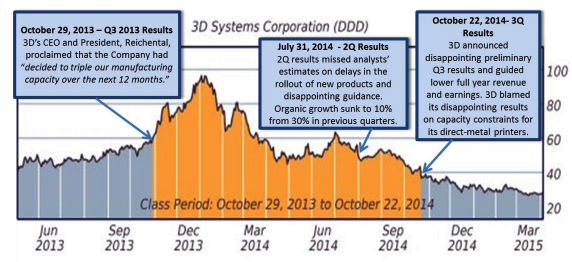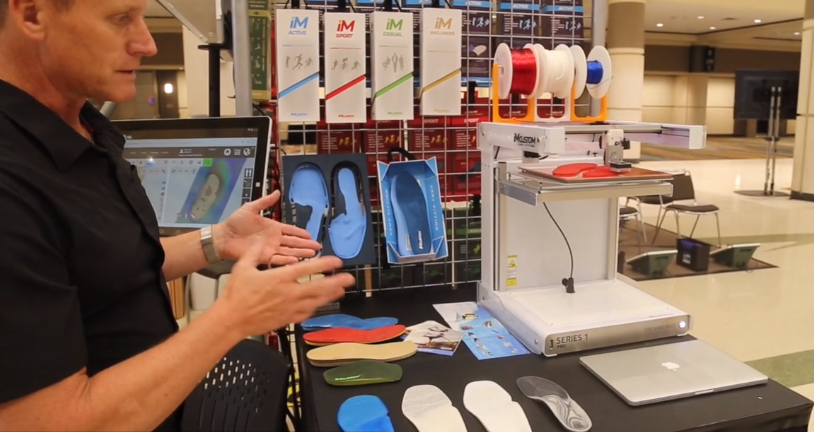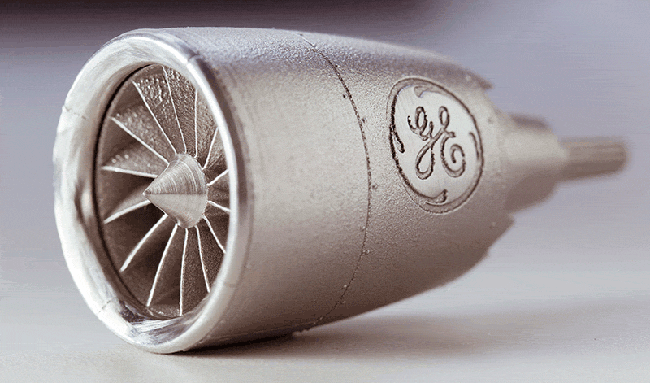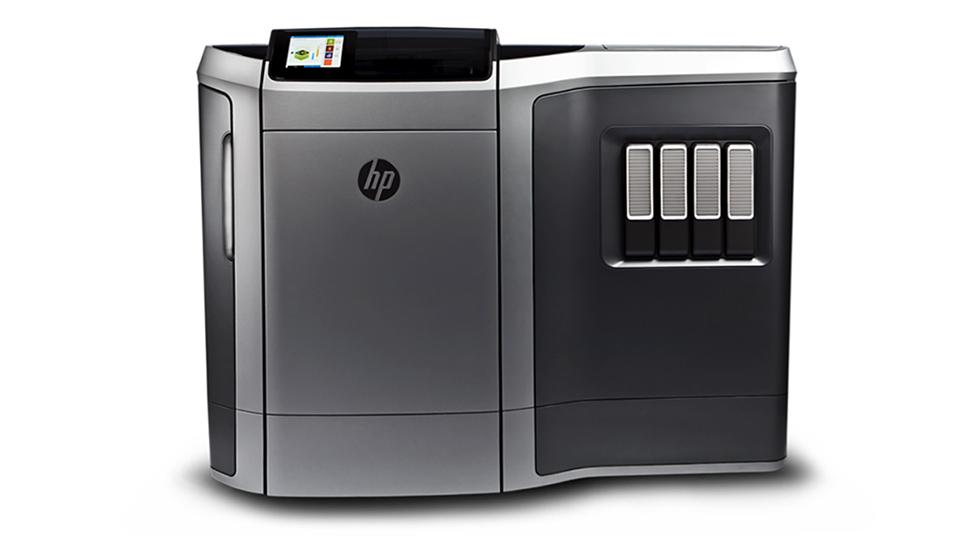 While it may be easy to see Dana Blankenhorn as just one more person giving investment advice and discussing the outlook of new technology, swimming out there in a heavily populated sea of such ‘experts,’ in ‘3D Printing Reboot,’ he hits the target fairly succinctly. Blankenhorn offers up numerous relevant examples showing that he’s informed and opinionated on the subject, along with technology as a whole—and has perhaps lost a few bucks along the way, too, thanks to 3D printing stocks gone downhill. Blankenhorn is also fulfilling his lifelong quest not only to show good foresight but to compel others to do so as well.
While it may be easy to see Dana Blankenhorn as just one more person giving investment advice and discussing the outlook of new technology, swimming out there in a heavily populated sea of such ‘experts,’ in ‘3D Printing Reboot,’ he hits the target fairly succinctly. Blankenhorn offers up numerous relevant examples showing that he’s informed and opinionated on the subject, along with technology as a whole—and has perhaps lost a few bucks along the way, too, thanks to 3D printing stocks gone downhill. Blankenhorn is also fulfilling his lifelong quest not only to show good foresight but to compel others to do so as well.
Telling you to hold onto your money for now, it’s a watch and wait, safe attitude emanating from Blankenhorn—albeit treading ever so slightly on the grim side—while offering up an overall average snapshot of the current 3D printing industry. Has the word on the street from others really been that 3D printing is dead, as he states? That’s a surprising and extreme proclamation, unless of course you are worried about your stock in, as Blankenhorn mentions, 3D Systems (NYSE:DDD), Stratasys (NASDAQ:SSYS), ExOne (NASDAQ:XONE) and voxeljet (NYSE:VJET). As we’ve all watched the financials come in for these companies, dismal still even as they’ve presented slight upswings, it would certainly seem—from virtually any standpoint—smart to hold onto your pennies there. Blankenhorn himself sees the industry as experiencing a ‘pause’ of sorts, which will offer eventual yet vague reinvigoration, and a resulting reboot.
If you’re speaking with those who are really on the street, however, in regards to the state of 3D printing and what it offers to ‘real people,’ what they most likely will tell you is that they’ve only just begun to see a new world open to them—and their businesses—via 3D printing for many, such as artisans producing everything from fine jewelry designs to fashion to—as Blankenhorn points out—custom insole designers like iMcustom who are having big success already, just in a recent pilot program with Sam’s Club.

Companies like iMcustom, with 3D printed insoles, are already experiencing great success, just with pilot programs–such as this one at Sam’s Club.
We are seeing a very real and steady momentum from those who are actually ‘in it.’ And while we’re looking at items such as 3D printed insoles, what about companies like Wiivv—who just broke a Kickstarter record for crowdfunding? If you have your finger on the pulse of the industry—rather than just worrying about big stocks—what you come away with is that 3D printing is really just heating up—with even Congress asking for information on what are certainly positive economics in recent briefings from Carnegie Mellon faculty and others.
Much of what Blankenhorn points out and gives to the industry for brownie points is accurate from a very general point of view. 3D printing is indeed blooming in the educational system and we are seeing incredible innovations emerge from entire classes working on projects—to students who tend to go a bit rogue with the tools provided and surprise us all–bringing to mind a project we saw recently from a maker who was able to design his own, completely functional, orthodontics—with stunning results.
Bioprinting is presenting a huge industry on its own, with a focus in North America, and undoubtedly, the medical sector is presenting huge strides, while patients experience enormous benefit from 3D printing in terms of medical models that help with everything from tumor diagnoses and subsequent treatment to allowing for new and complex procedures such as partial facial reconstructions. Stock prices and outlooks not withstanding, if you mentioned to the growing number of patients benefiting from 3D printing that the industry was ‘dead,’ I think they might not only be quite surprised, but would heartily beg to differ, citing personal experience.
As bioprinting and the medical industry become more aligned with 3D printing, researchers are indeed now out of need presenting and fulfilling new hardware, software, and material requirements. When dealing with tissue, researchers are not printing hard, plastic 3D models, they are fabricating cellular structures with soft material, and this offers up a new niche for manufacturers; however, some of these researchers are quite notably exploring the affordable route and taking advantage of open-source technology to get what they need without waiting for grant money or extra funding.
“Big companies haven’t forgotten 3D printing, but their time horizons for it are lengthening and it’s not considered material to their results,” states Blankenhorn.
He then factors in HP and what most would consider to be a questionable state of affairs as they seem to be attempting to riding on the coattails of 3D printing for future survival, with numerous murmerings regarding who they might have to buy out to get a true leg up in the industry. Their Multi Jet 3D Printer will ship this year, with a new slant as they point out they aren’t so much interested in the 3D printing industry, but really only in the bigger picture of manufacturing—and with a high-speed machine that will be in the $100,000 and $1,000,000 range.
GE, although they have been working toward opening new and sizeable additive manufacturing facilities in both Pennsylvania and India, and are indeed quite publicly invested in 3D printing as a tool of the future that will allow them to do the impossible, merit a slight mention by Blankenhorn. Considering one of their new mottos is ‘Additive manufacturing is reinventing the way we work,’ coupled with the fact that they currently have about 300 3D printers in production and are heavily involved in 3D printing a range of high-quality components, this might be a direction to explore when considering whether an industry is truly expiring, pausing, or headed for a reboot years from now.
“GE is using laser-powered 3D printers, 3D ‘inking’ and ‘painting’ machines, and other advanced manufacturing tools to make parts and products that were thought impossible to produce and which sometimes verge on art,” states the company on their website. “We see advanced manufacturing as the next chapter in the industrial revolution.
 Blankenhorn has also followed up on the reboot idea with a new article that tackles the causes of what he sees as a ‘flame-out’ in the industry, pinning most of it squarely on the shoulders of one who many considered a hero in the maker community, Bre Pettis. I’m sure some might consider the idea that Pettis is responsible for an entire flame-out, death, pause, reboot scenario a bit extreme—but if all you are examining are larger stock values and not a global view, it’s perhaps quite simple to take that perspective. We here at 3DPrint.com even seem to get a sideways shout-out for helping to raise stock values, um, temporarily.
Blankenhorn has also followed up on the reboot idea with a new article that tackles the causes of what he sees as a ‘flame-out’ in the industry, pinning most of it squarely on the shoulders of one who many considered a hero in the maker community, Bre Pettis. I’m sure some might consider the idea that Pettis is responsible for an entire flame-out, death, pause, reboot scenario a bit extreme—but if all you are examining are larger stock values and not a global view, it’s perhaps quite simple to take that perspective. We here at 3DPrint.com even seem to get a sideways shout-out for helping to raise stock values, um, temporarily.
“Pettis was spun-out by Stratasys into a new unit, Bold Machines, in 2014 and Bold Machines was then separated from Stratasys last year. Pettis’ big ideas were forgotten and he grew a gray beard, having gone through the five phases of fame, from ‘who is Bre Pettis’ back to ‘who is Bre Pettis’ in just three years.”
“The industry spent all of 2015 cleaning up the mess. Stratasys reported a loss of over $200 million in just the first quarter of 2015, and 3D bit the bullet later in the year, letting go of CEO Avi Reichental in October and writing off the Cube inventory. As of this writing 3D is still led by interim CEO Andrew Johnson, a lawyer. The company’s losses for 2015 almost equaled its total revenue but its outlook was called ‘surprisingly optimistic’ by 3DPrint, an industry web site, and for a few days after the results came out the stock went up.”
The history of Bre Pettis, MakerBot, and Stratasys, as well as their current story is obviously another conversation—as well as subject matter for several other articles—but Blankenhorn asserts their guilt for the downfall of much with provocative new headlines that surely Pettis, also penalized for going gray along the way, won’t appreciate much. I’m sure he has more interesting things to worry about, however.
Let’s also note that while buying stocks right now bears consideration in terms of the 3D printing industry and the stumbles of the larger corporations, there is a huge amount of activity going on worldwide—and in the cases of startups and universities—be sure to take a look at the tools they are using to make their marks on the world. In the case of Amos Dudley, who we mentioned earlier with his 3D printed orthodontic aligners, he was using the Stratasys Dimension 1200es from his school lab at the New Jersey Institute of Technology (eschewing his home 3D printer) to make his impressive aligners. So, while it may be watch and wait on investing in companies like Stratasys for a good long while, the reality is that they have provided the tools that many are just discovering and beginning to use in their promising—and eventual–efforts to change the world. If what we are looking at today is a pause, then the re-boot is going to be something to behold for sure. Do you think 3D printing is dead, or on pause? Discuss in the 3D Printing Reboot, No Stocks Now forum over at 3DPB.com.
Subscribe to Our Email Newsletter
Stay up-to-date on all the latest news from the 3D printing industry and receive information and offers from third party vendors.
You May Also Like
3D Printing News Briefs, April 27, 2024: Research, Digital Dentistry, Cycling, & More
We’re starting today’s 3D Printing News Briefs with some research into 3D printed luminescent quantum-dot polymer architectures and free-form laser beam shaping, and then on to an open source 4-axis...
HP & INDO-MIM Collaborate to Boost Metal 3D Printing in India
HP Inc. and INDO-MIM, a US- and India-based supplier of metal injection molding (MIM) powders and contract manufacturer, have announced that the two companies will collaborate to accelerate additive manufacturing...
3D Printing News Briefs, February 17, 2024: Shot Blasting, Service Bureaus, & More
In today’s 3D Printing News Briefs, we’re starting out with post-processing, as SKZ Würzburg is using a shot blast system from AM Solutions for its research. Moving on to business,...
3D Printing News Unpeeled: Not That Kind of Organ 3D Printing
GKN Aerospace will create a 150 jobs in Trollhattan Sweden with an investment of $60 million part of which comes from the Swedish Energy Agency’s Industriklivet initiative. The investment will...































